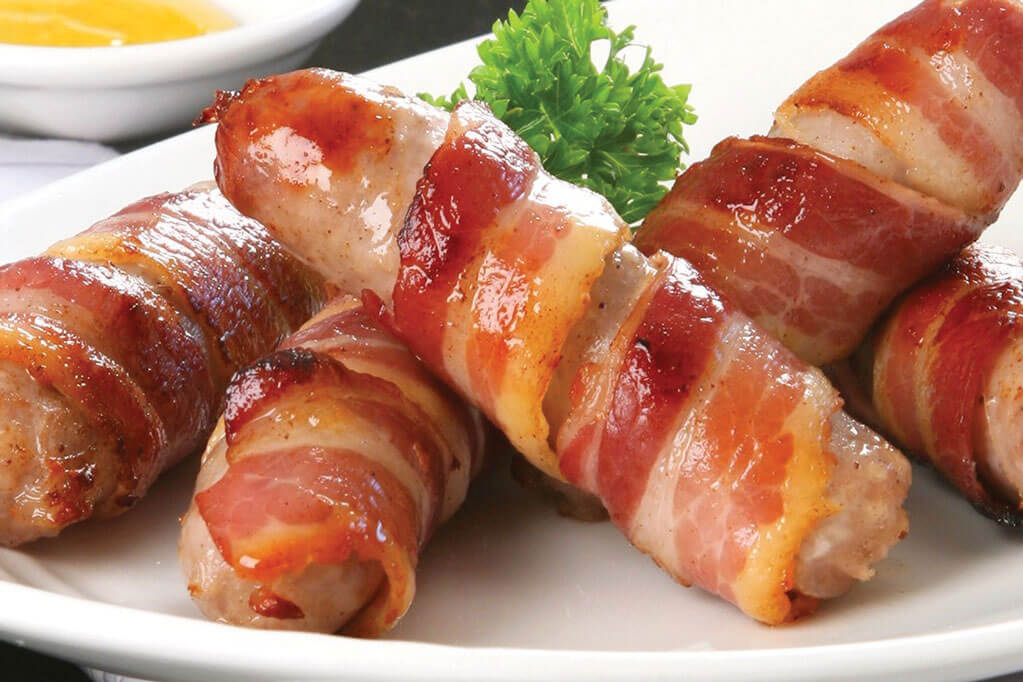For many families, Christmas dinner wouldn’t be complete without that comically-named accompaniment to the turkey, known as Pigs in a Blanket.
Traditionally these are little sausages wrapped in bacon, but unlike many of our old-established festive traditions, the earliest written record of these tasty morsels goes back only quite recently to 1957. That was the year when American cooking queen Betty Crocker featured them in a ‘cooking for kids’ publication – and from then on, those little piggies literally flew!
The original American version though was more like a mini hot dog, with a little cocktail sausage wrapped in a kind of biscuit dough, pancake or croissant.
For some reason, the Brits adapted the recipe and typically began using bacon as the ‘blanket’, while the Danes, Germans’ Belgians, Russians, Canadians and Japanese all have their own variation on the same theme of the wrapped sausage, often served as an appetiser or hors d’oeuvre. It’s also found favour as a side accompaniment to a meal, as with the UK Christmas dinner.
Typically small enough to be eaten in just one or two bites, Pigs in a Blanket are also known in various countries by other names, such as devils on horseback, kilted sausages and wiener winks.
In the US, there isn’t the same link with Christmas – indeed, they celebrate a National Pigs in a Blanket Day in the late Spring, on April 24th every year.
The important thing to note is that while in some cultures the ‘pigs’ can be wrapped in a pancake or pastry rather than bacon, they are still very different from sausage rolls, which are made of sausage meat rather than a whole sausage.
Here in the UK, sales of ready-made Pigs in a Blanket have boomed at most of the supermarkets, as well as local specialist butchers who make up their own recipes. And of course, with the current trend for meat-free eating, there are also plenty of vegetarian and vegan versions of those wrapped-up pigs.



